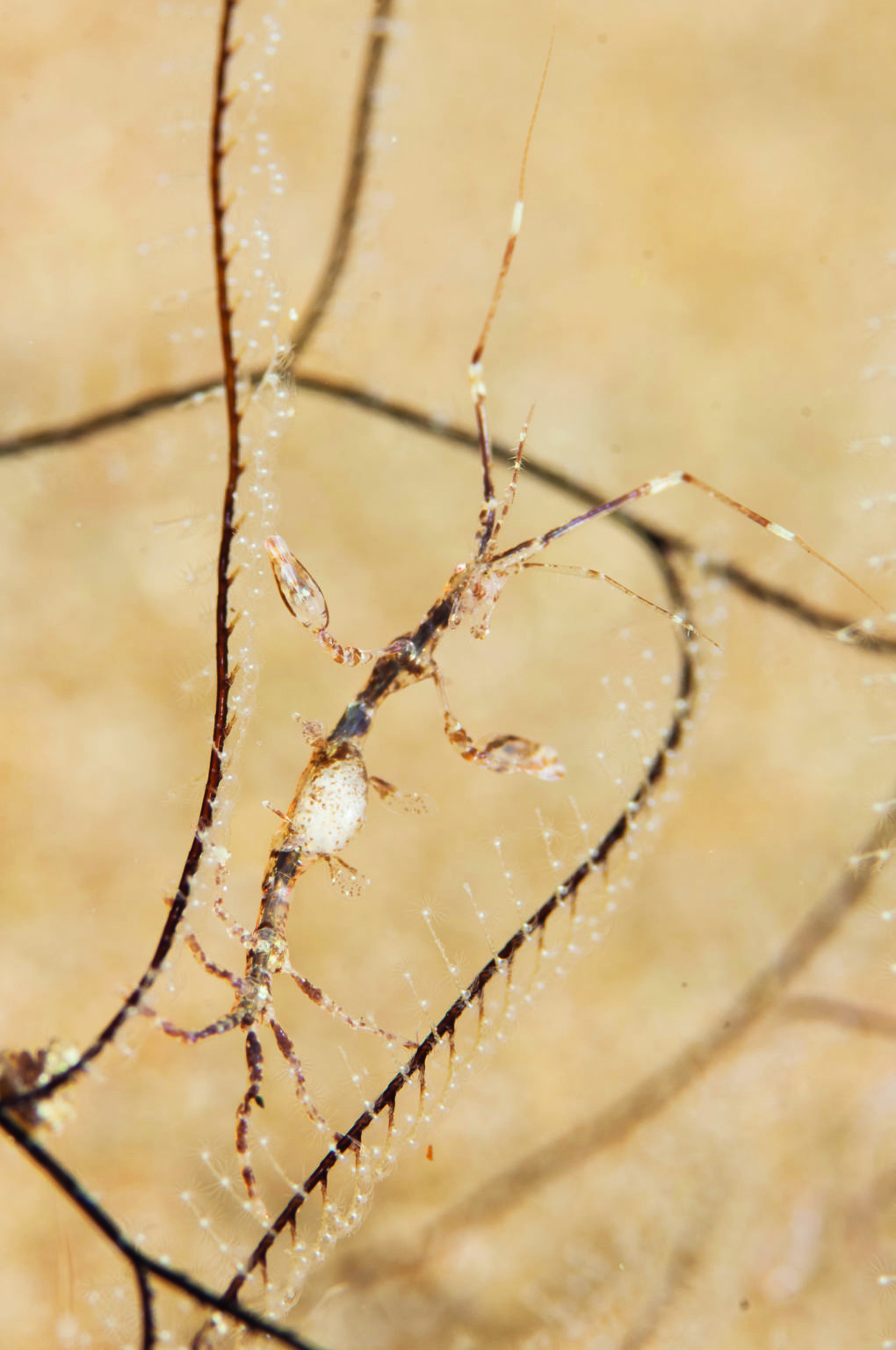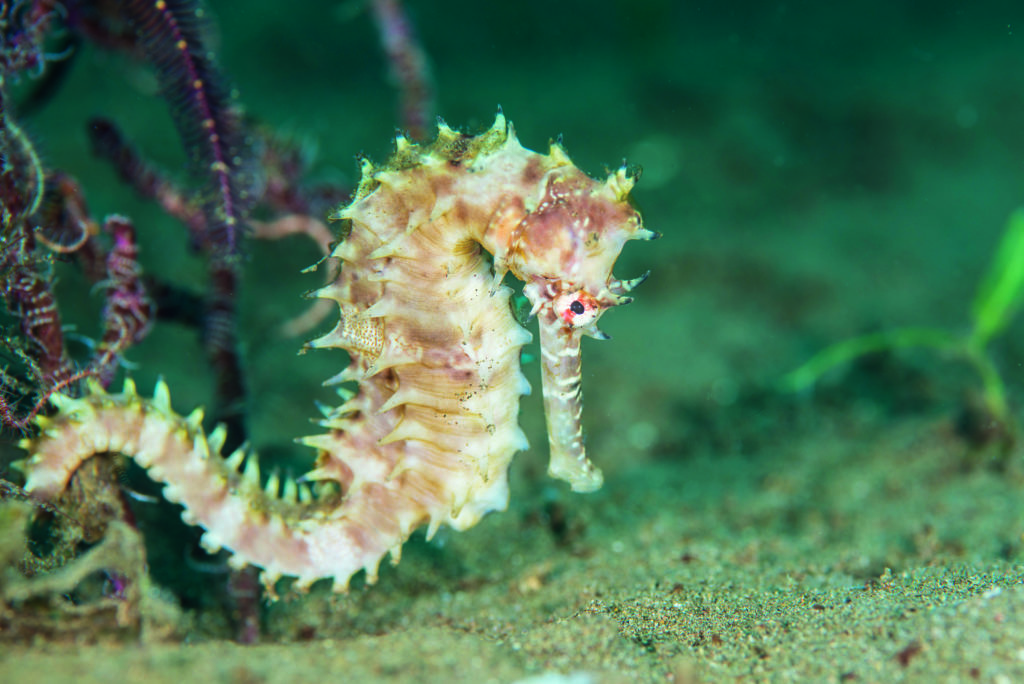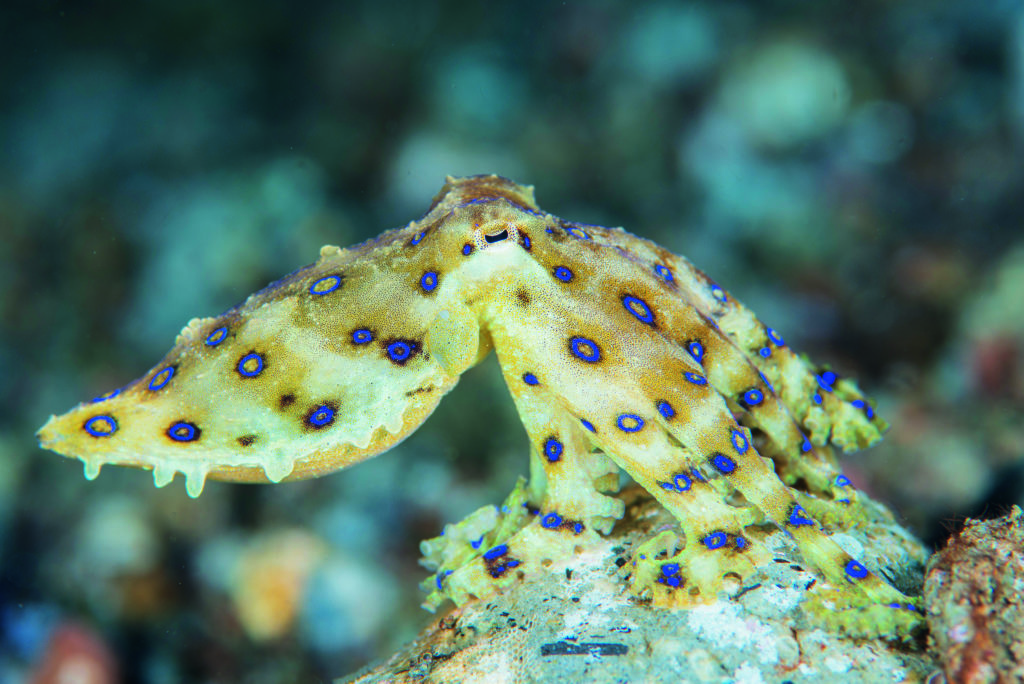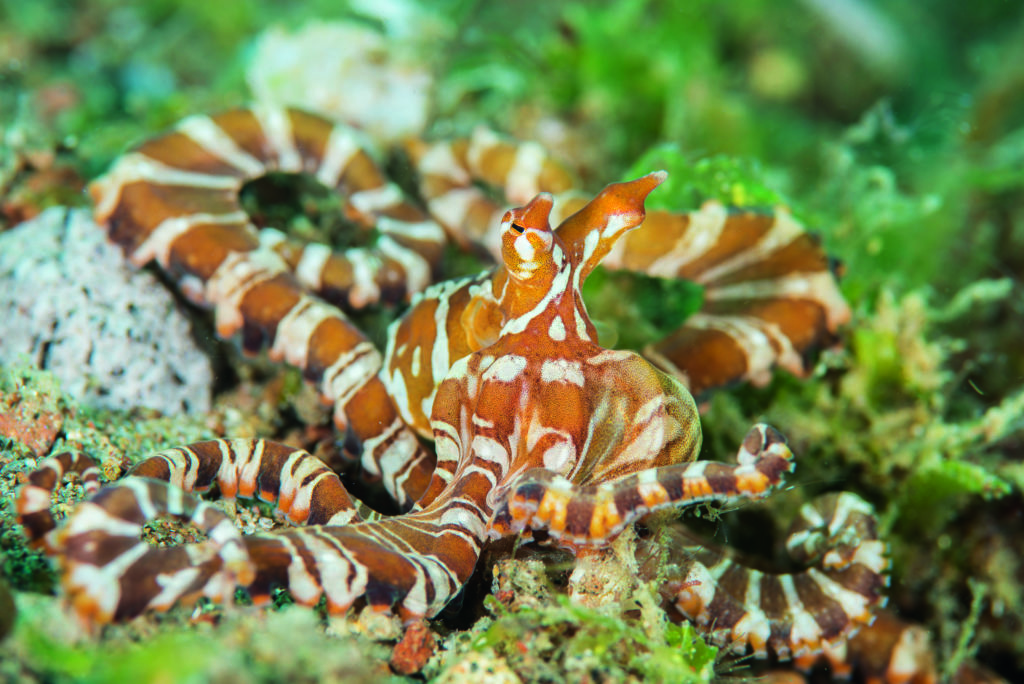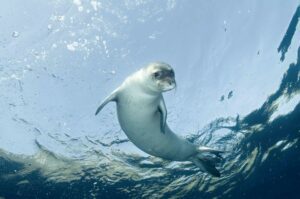Marine biologist Dr Richard Smith explores the bounty of Dumaguete in the Philippines.
After so many years exploring Indonesia, it has been exciting to spend some time in the Philippines over the past few years. Visiting this wonderful country, with its thousands of coral-fringed islands, proves just how rich the Coral Triangle is. Although it’s geographically very close to Indonesia, it very much has its own twists on a theme.
Dumaguete, on the southeast corner of Negros Island, is a great example. As a renowned muck-diving area, you might expect to find the same animals as Indonesia’s fabled Lembeh Strait; however, the region seems to have received a different batch of magic dust that has occupied its reefs slightly differently.
The dive sites of Dumaguete sit just half an hour by car outside the city of the same name, along the Dauin coast. Here, black volcanic sand, which is always a good indicator of fantastic muck diving, occupies many miles of palm-fringed beaches. Unlike Lembeh, these sites seem relatively exposed to the open sea, but the various headlands and other islands seem to limit strong ocean currents and wave action.
Along the Dauin coast, many resorts have cropped up catering to all tastes and budgets. Access to the sites is so easy that some offer shore dives on their house reefs, but the vast majority of diving is conducted either from speedboats or Banka boats in the local style. These large and spacious wooden boats have traditional bamboo outriggers for stability, especially helpful during longer journeys out to the reefs of Apo or Siquijor.
San Miguel is one of the furthest north of the dive sites and makes for a fantastic day or night dive. In fact, it’s probably my favourite true muck site in the area. As well as the usual suspects, there are great nudibranchs here, as well as many pairs of golden pygmy gobies. These tiny fish form male-female pairs and guard a small hard surface onto which they lay a clutch of eggs.
This could be something as simple as a shell, a piece of bamboo or a beer bottle! By night, in water deeper than around 20m, I have seen several of an unusual miniature frogfish that I haven’t yet been able to identify. I also saw for the first time a large red nudibranch, Dendrodoris guttata.
Another highlight of Dumaguete’s dive sites is Secret Corner. At the point is a quite steep slope of pebbles of varying sizes that stretch far beyond recreational diving limits. The site can be hit by quite strong currents at times, which can make it slightly awkward to dive. If you are able to get in during the late afternoon with slack tide, the site becomes a cephalopod wonderland, with the possibility of sighting all of the must-see muck site octopuses.
I have seen wunderpus, many blue-rings, the rare mototi (poison-ocellate) octopus, coconut octopus and even the super rare hairy species. I have also come across a rare gurnard lionfish here too, which I have only ever seen at two sites before.
Diving around Dumaguete, it’s worth trying to hone on your critter-hunting skills. If you look closely at the sponges, soft corals, crinoids or anemones, you’re sure to find some kind of well-camouflaged little creature living hidden on their surface. Many will be very small, so a magnifying glass might not be a bad idea to pop in your pocket (these are sold by well-known online retailers).
A particularly rich area to search for critters is among the pink Xenia corals (these corals are constantly opening and closing and resemble a flower). There are a multitude of critters that mimic these polyps and are particularly abundant around Dumaguete. The radial filefish is a fish worth keeping an eye out for in large patches, as well as nudibranchs and crustaceans that resemble their host.
If muck diving everyday gets a bit much, there are coral reef alternatives nearby too. Just an hour away by boat is the well-known marine reserve of Apo Island. The entire island is surrounded by dive sites, so guides decide your entry based on local conditions on the day.
Here, hard corals are dominant. Some sites have shallow coral gardens and others are steep walls, where it’s always worth looking into the blue for something bigger to pass by. There are many turtles here, which are fairly used to divers so likely to allow a close approach.
I have seen many sea kraits at Apo, hunting between the corals for small fishes to eat. Their bold grey and black banding offers a warning to potential predators of their potent venom. Relatedness to the cobra family certainly has its benefits. However, it’s interesting to note that some of the mainland sites at Dumaguete also has true sea snakes, which are much rarer indeed.
Although superficially similar – the sea snakes are also coloured with bold black and white bands – the sea kraits much less recently made the transition from land into water-dwelling serpents. As such, they have fewer adaptations to an ocean lifestyle.
Most importantly, sea kraits have to come ashore to lay eggs, but sea snakes give birth to live young and never have to leave the water. In fact, a true sea snake is so adapted to life in the ocean that without the hydrostatic pressure of being submerged, their body can’t cope with the pressure and they are unable to move on land.
Seasonal Abundance
One of the most-striking features of diving around Dumaguete is that different times of year have very different assemblages of critters. On one visit, I counted 11 frogfishes on the site Tires, and 50 animals during my whole stay. Some would have comfortably perched on a five-pence piece, while others were the size of a football.
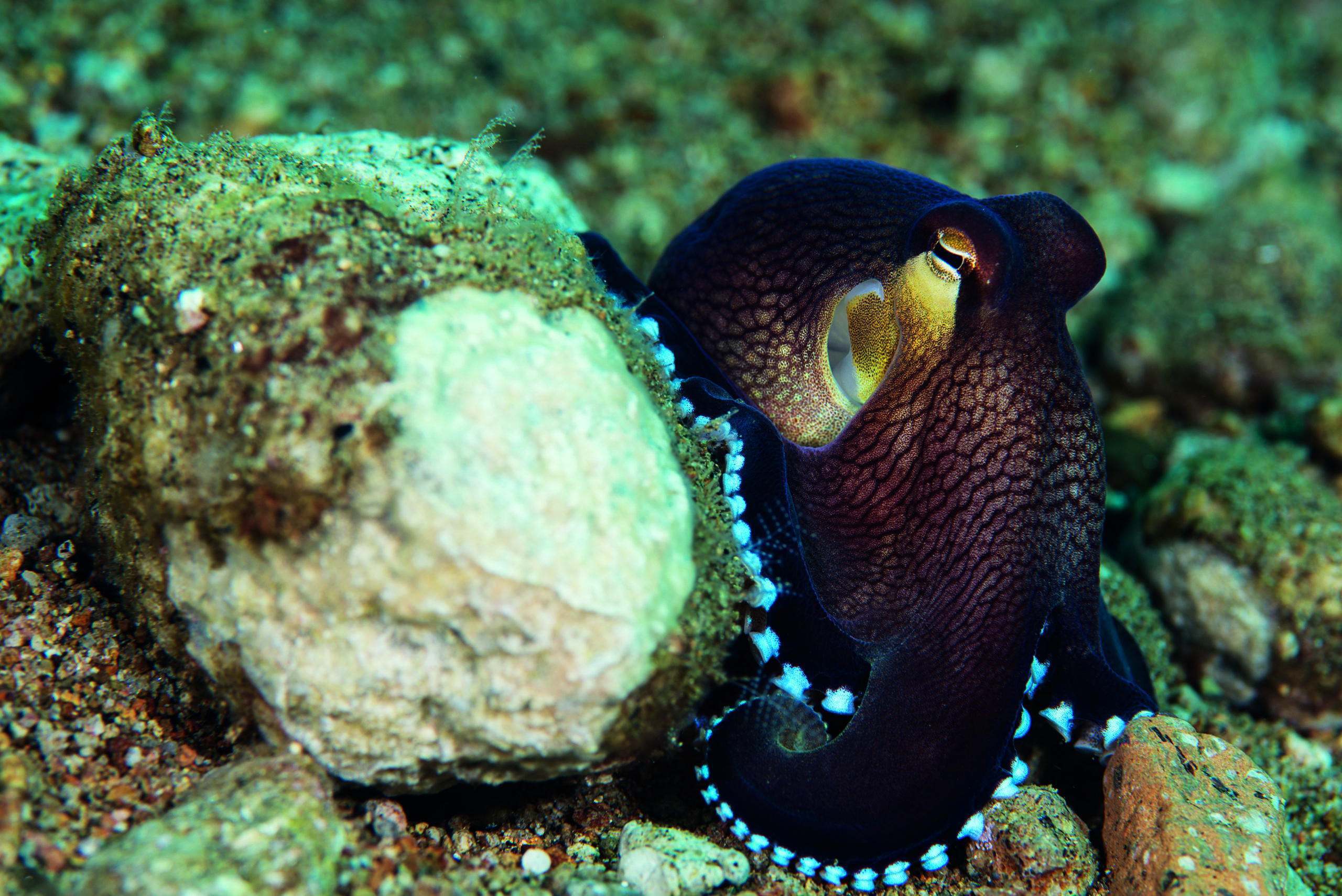
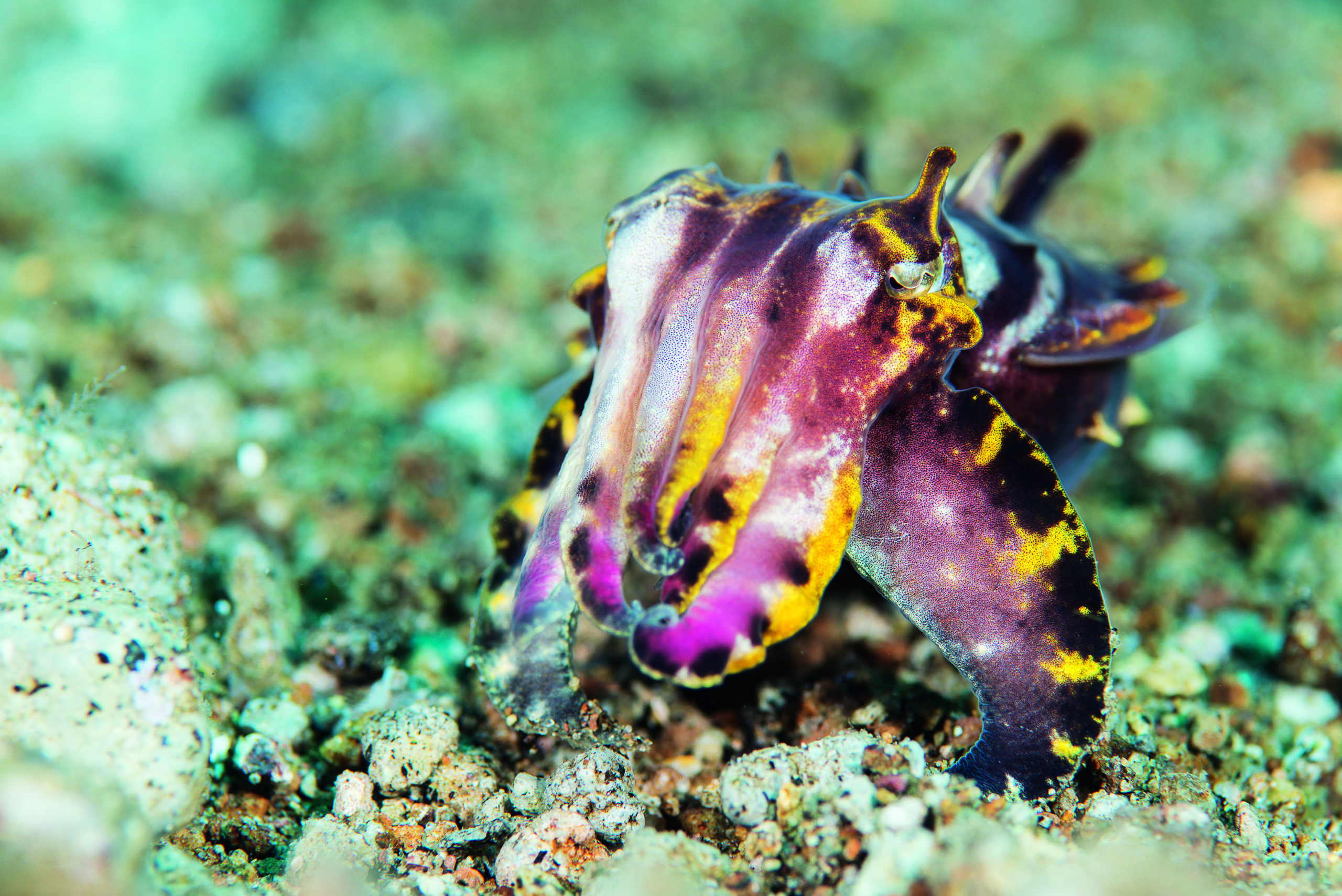
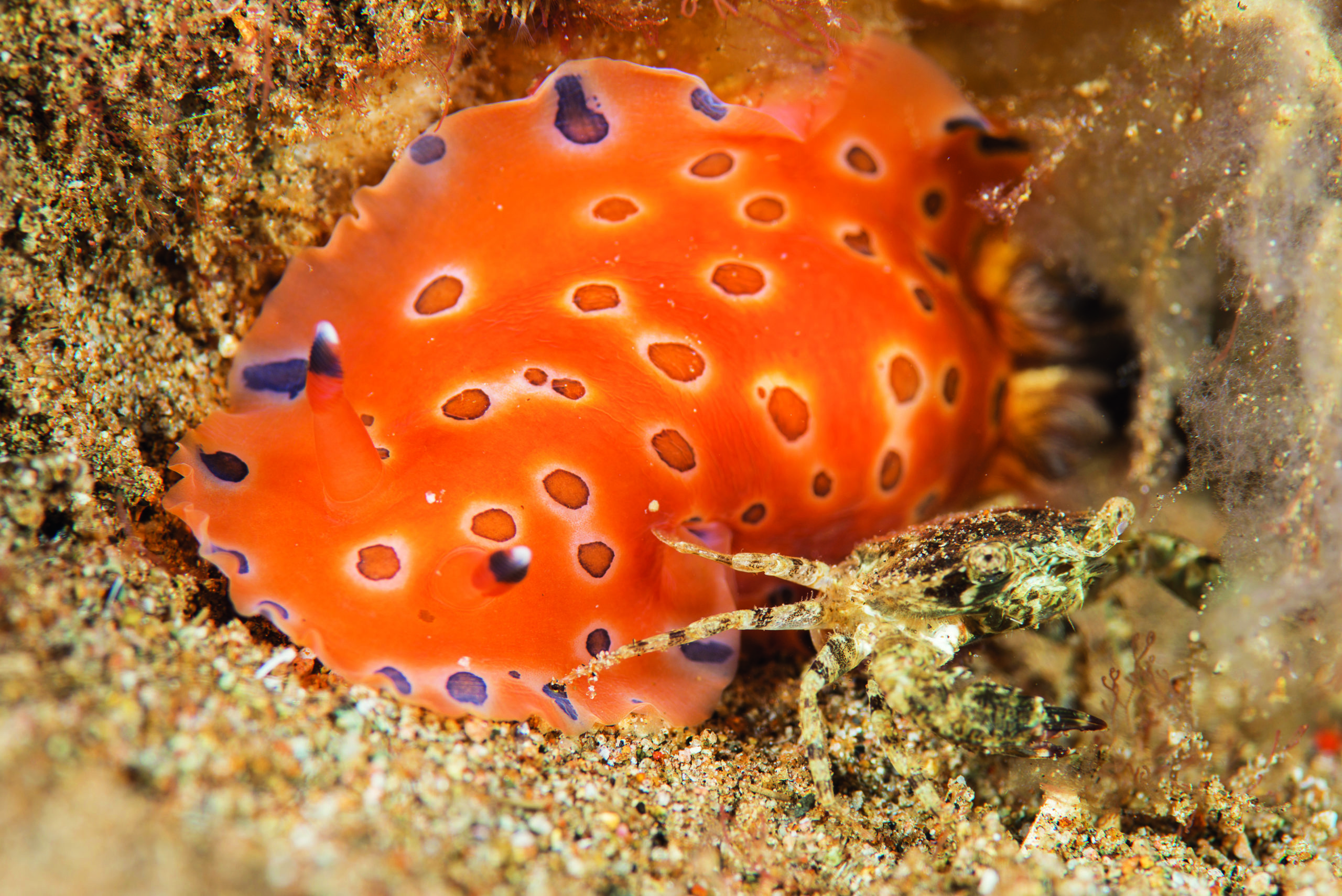
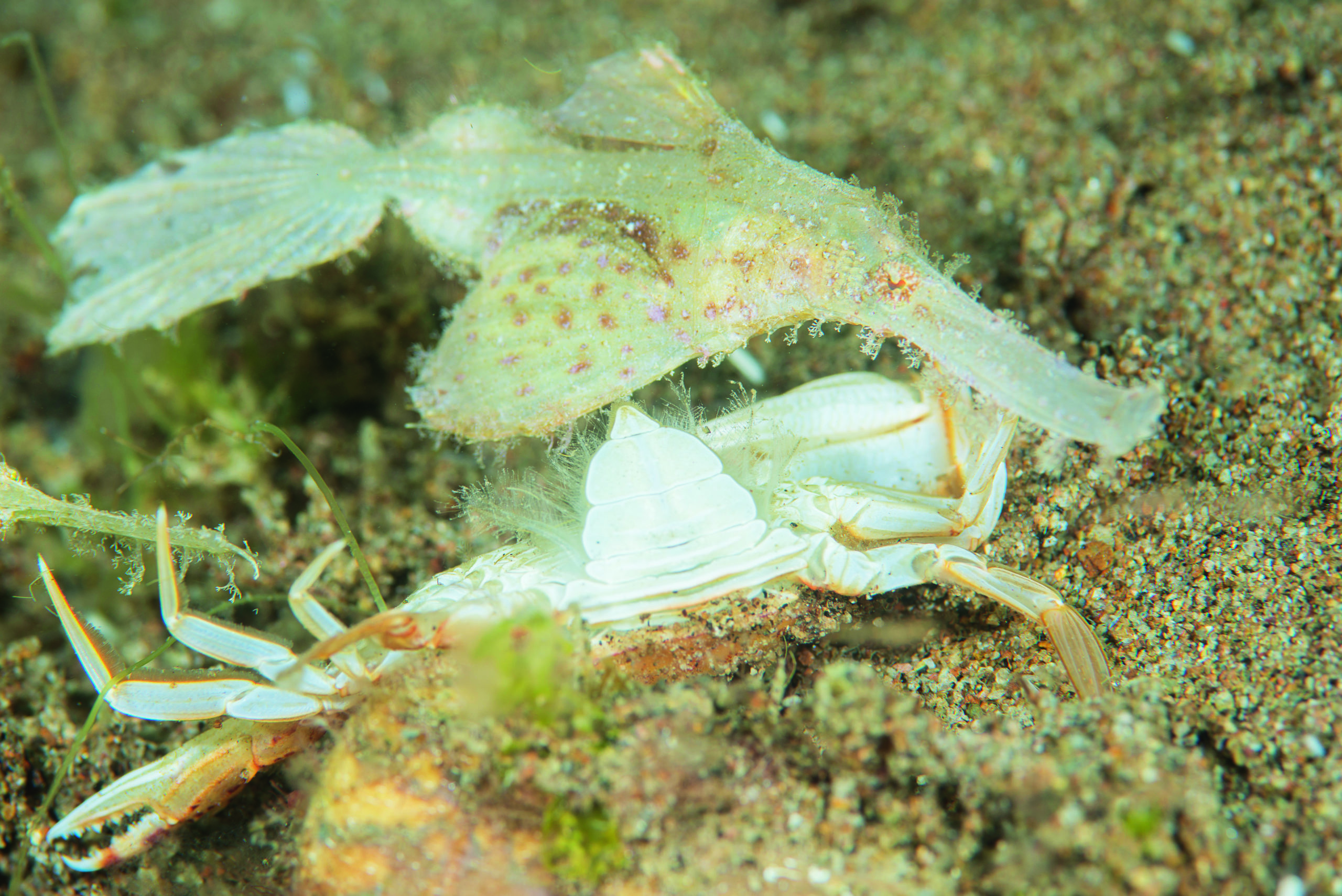
Another time there were seahorses everywhere, and I reached a personal best of counting 18 animals on one dive. Other animals that seem to suddenly take over the reefs are octopuses and ghost pipefishes. Whatever time of year you decide to visit, there are always some of these animals to be found. They just seem to have population explosions are different times of year.
There is something very special about the sites around Dumaguete, and I am happy that they have received some local protection. All along the coast there are small marine sanctuaries, which are roped off. Boats and fishing are prohibited within them, but divers can enter and enjoy the animals that are protected from fishing pressures, such as trawling.
Trawling, as we all know, is one of the most-destructive forms of fishing due to the huge amount of by-catch that is taken, and for the damage it goes to the seafloor. So, the small marine sanctuary fee collected by the resorts are well worth it and helps to fund the continuing project.
Local Specialities
Aside from the usual muck-diving suspects, there are several animals that are unique to this area, or at least the northern Philippines. One group that I have been observing and photographing across the entire Coral Triangle over the last few years are the fairy wrasses. The males of these fishes are the peacocks of the reef. In the late afternoon, he undergoes a dramatic transformation from pale pink to vivid and multi-coloured to show off to the gathering ladies that are ready to spawn. Because females choose to mate with the males that they find most attractive, there is some variation in female preferences. his has resulted in new forms evolving in different areas thanks to female choice. This process is known as sexual selection.
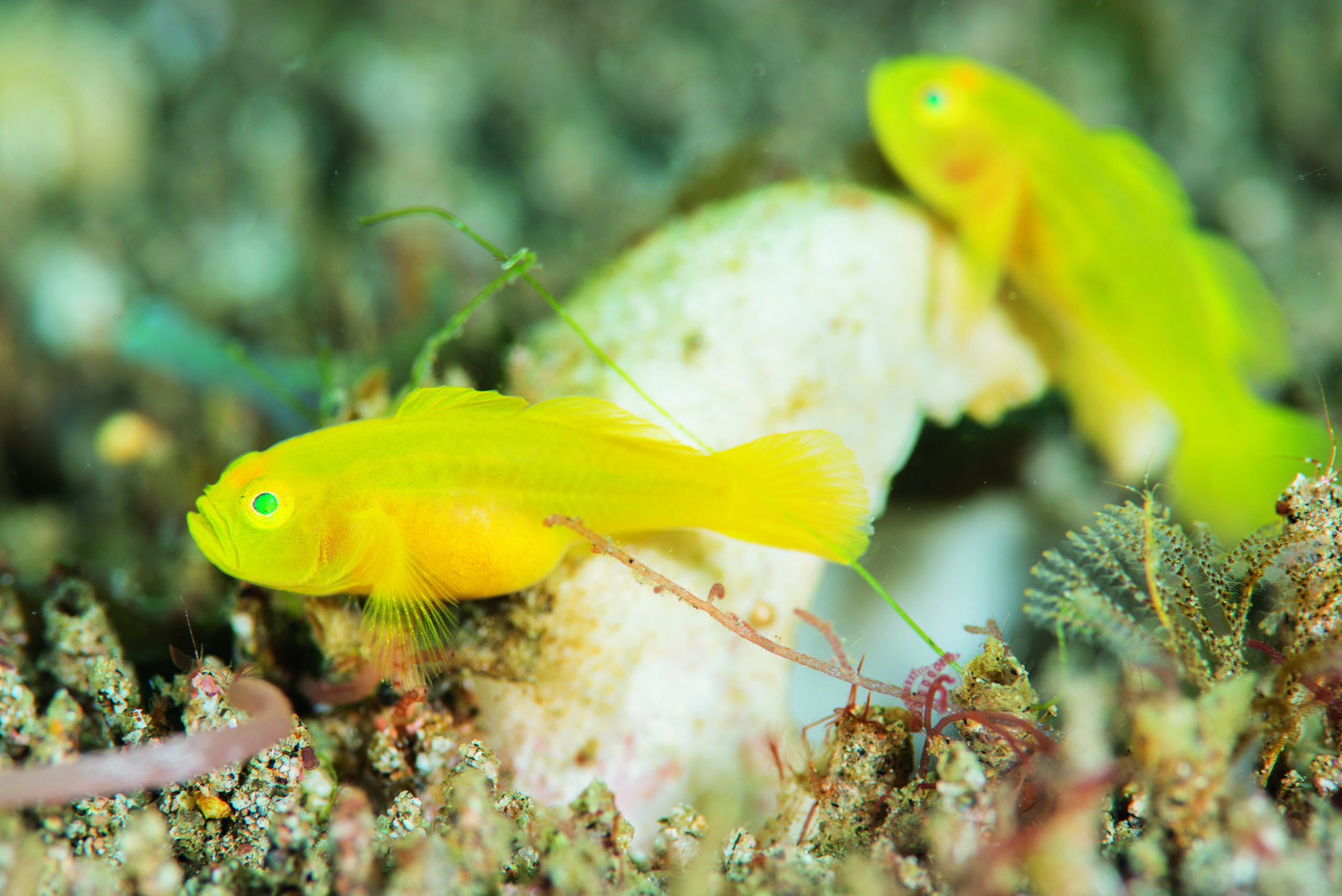
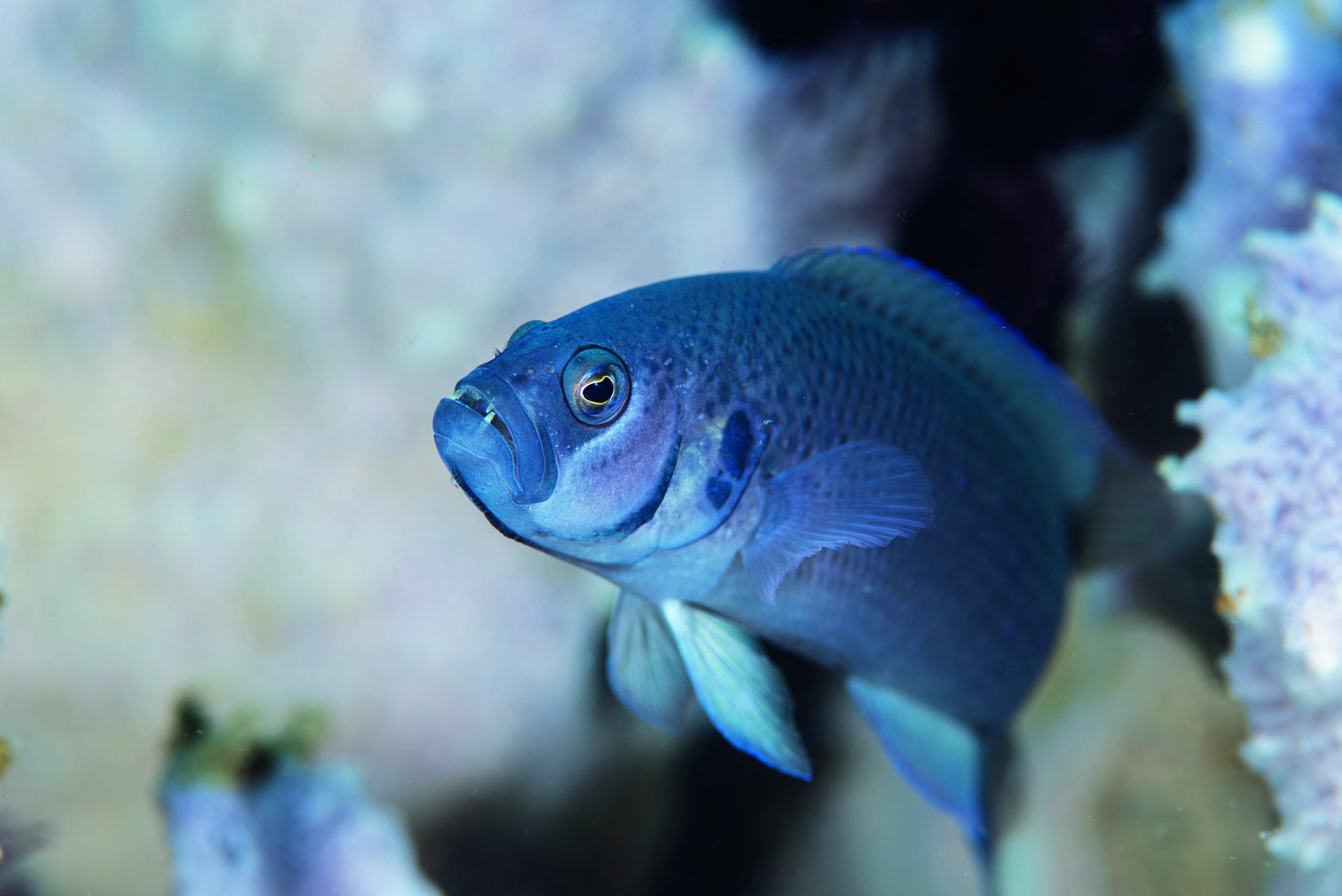
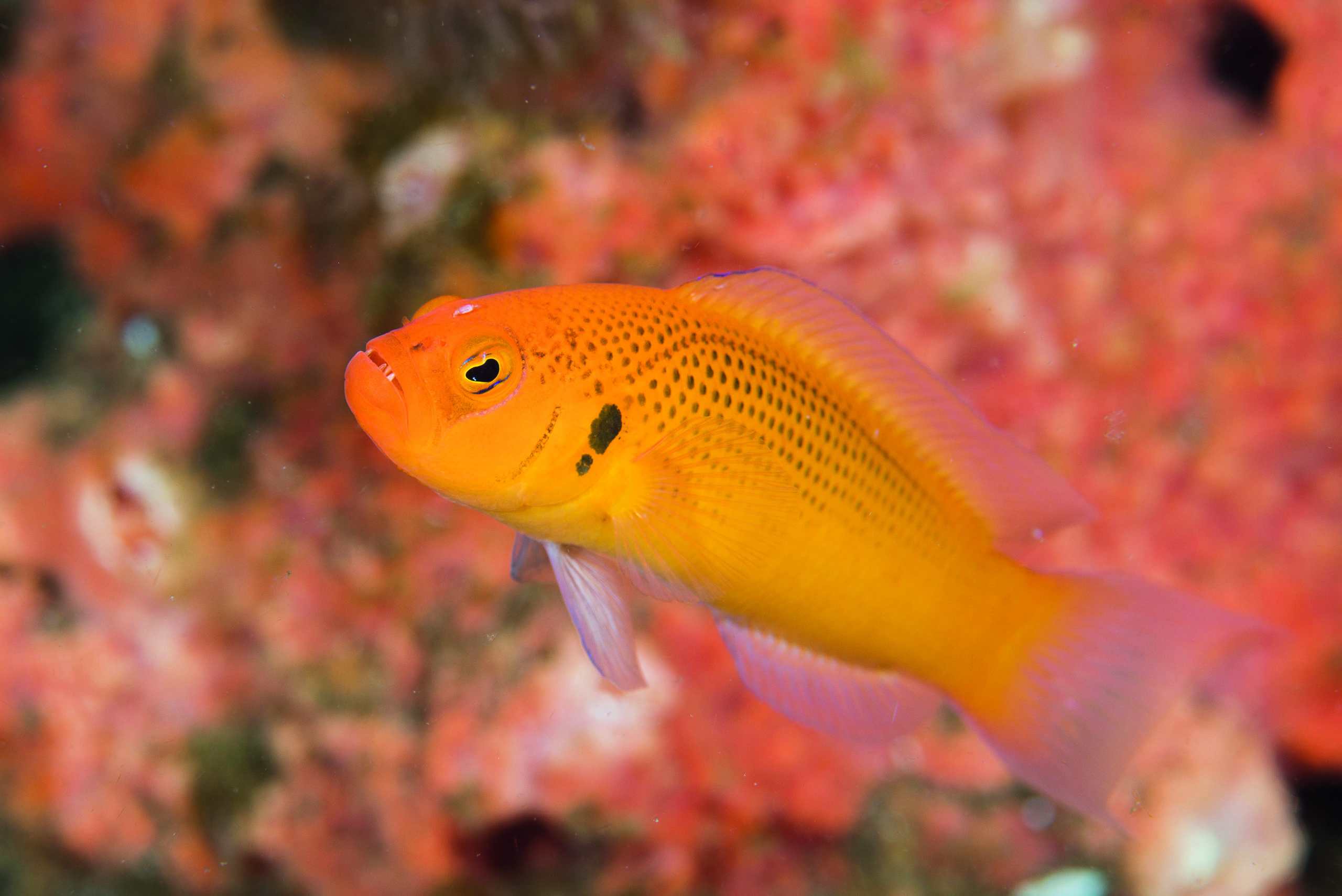
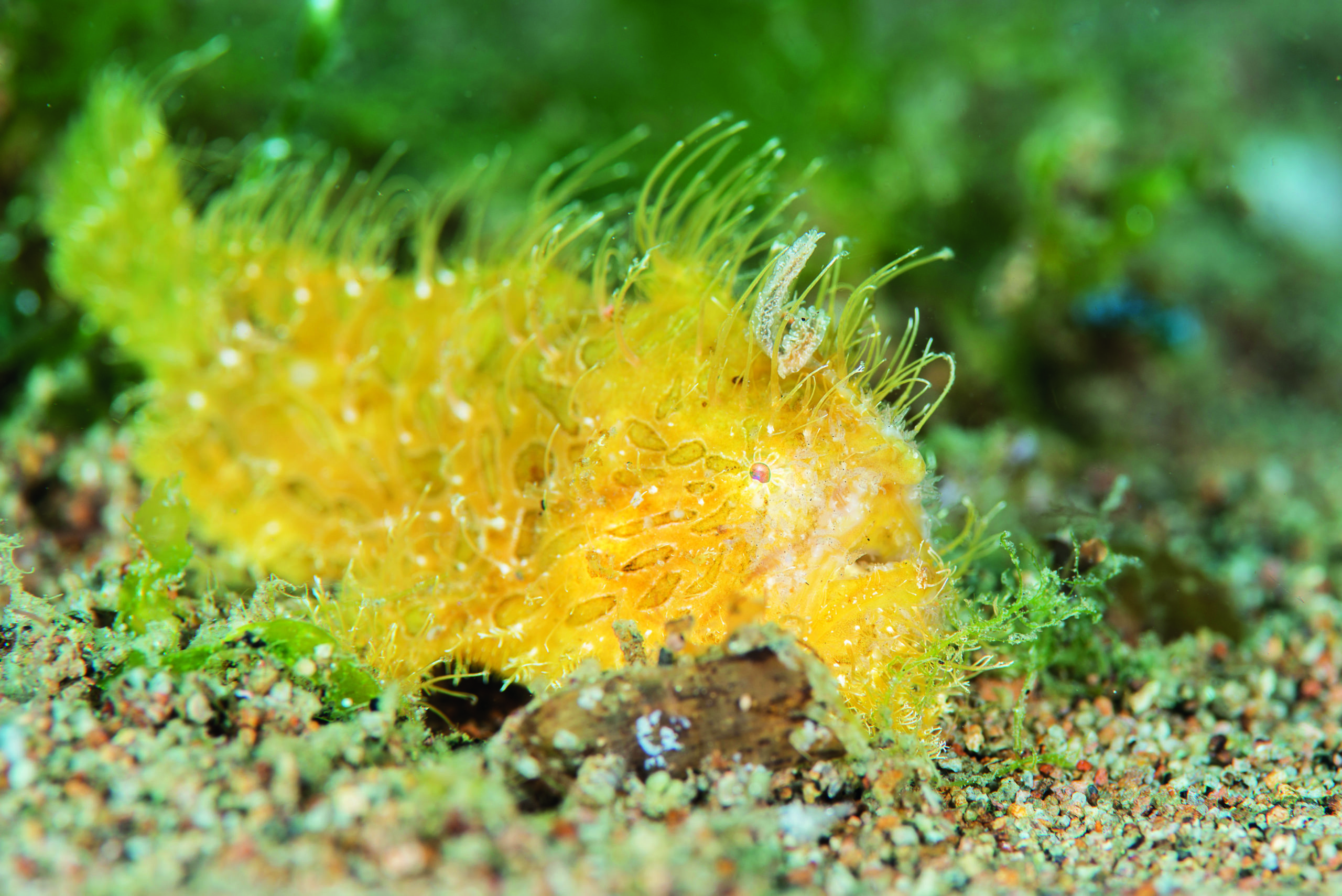
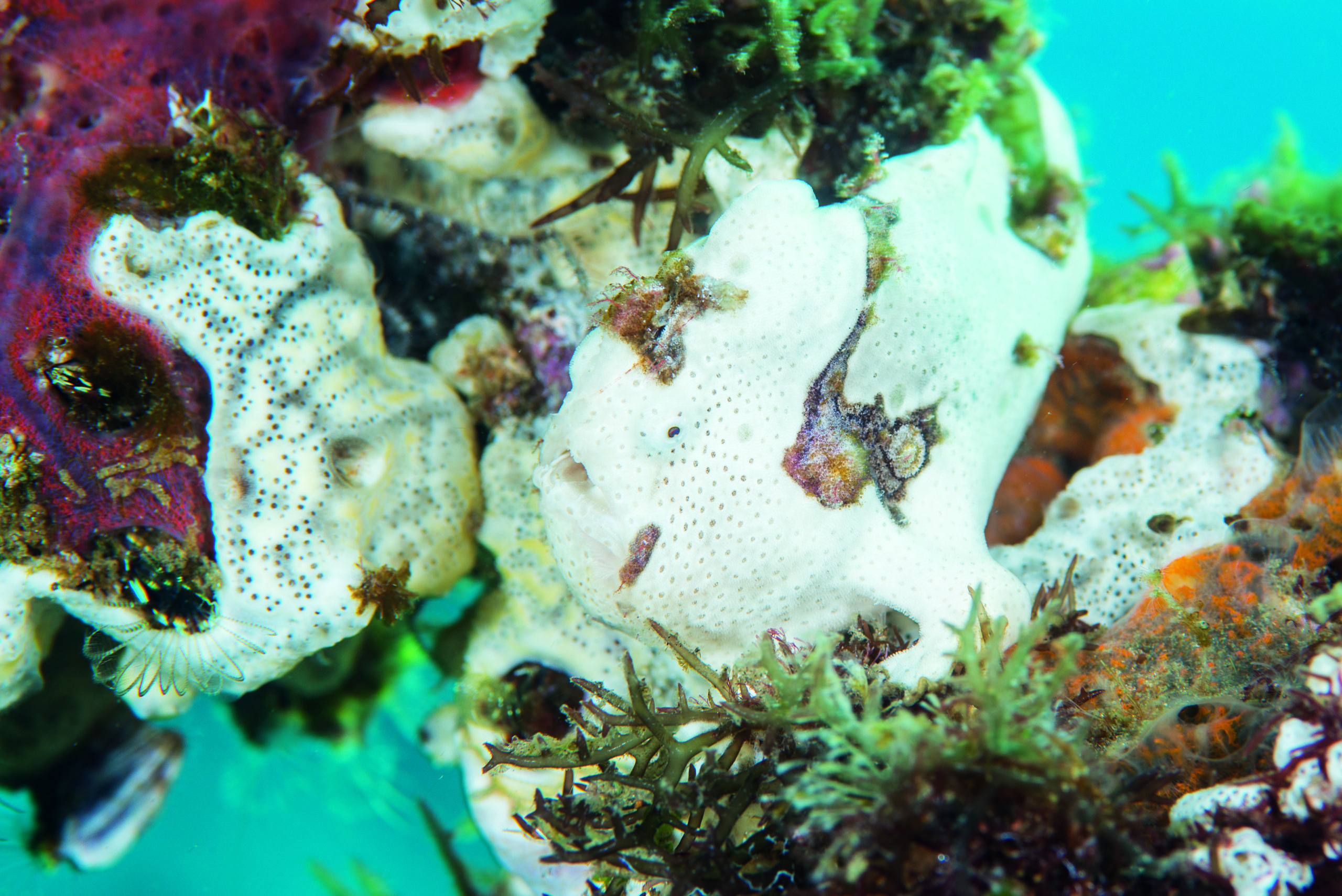
In the Dumaguete region of the Philippines, there are a few interesting species that I have been lucky enough to find. The red-finned fairy wrasse has close relatives in the Komodo and Raja Ampat regions, but this third species is only found in this region of the Philippines. When displaying, the sail-like dorsal, anal and pelvic fins of the male turn bright scarlet red and the body tangerine orange.
It is certainly something to behold. During my last visit, I was very excited to spot another fairy wrasse that I later found out to be the newly discovered Cirrhilabrus isosceles, only named in 2016. Sadly, it was at almost 30m depth and I didn’t have the time to get a nice shot. There’s always something to go back for.
Aside from the fairy wrasses, the locally endemic jaguar dottyback is worth looking for too. Pairs are found around small boulders in deeper areas with a sandy bottom. They are quite pugnacious for such a small fish and swim out to intimidate a diver if they linger too long or get too close. The bright orange male contrasts starkly with the blue-grey female.
If you haven’t yet visited the Philippines, Dumaguete is a great starting point. It has something for everyone but particularly those who enjoy the smaller animals. The dives are very easy, while being exceedingly rewarding. I have been four times already, and I’m sure I’ll be back again before long.
One of the most-striking features of diving around Dumaguete is that different times of year have very different assemblages of critters
They are quite pugnacious for such a small fish and swim out to intimidate a diver if they linger too long or get too close
BIOGRAPHY: Dr Richard Smith – British underwater photographer and writer Dr Richard Smith aspires to promote an appreciation for the ocean's inhabitants and raise awareness of marine conservation issues through his images. A marine biologist by training, Richard's pioneering research on the biology and conservation of pygmy seahorses led to the first PhD on these enigmatic fish. Over the past decade, Richard's photographs and marine-life-focused features have appeared in a wide variety of publications around the world. Richard organises and leads marine life expeditions where the aim is for participants to get more from their diving and photography by learning about the marine environment.
Photographs by Richard Smith | Ocean Realm Images
